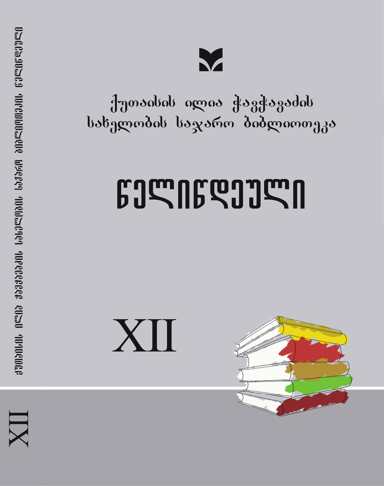Linguistic Peculiarities Of Coridet Documents (X-XIII Centuries)
DOI:
https://doi.org/10.48614/yk.12.2020.125-134Keywords:
Adjara, Ottoman Empire, Writing, Revival, BatumiAbstract
Korideti is a village named after the river in southwestern Georgia, Adjara. It is located on the bank of the left tributary of Chorokhi - Murghula, in the community of Dzansuli. Today this area is within the borders of Turkey.
In the Church of Our Lady of Corrida from the IX century to the XIV century was kept the manuscript of the Greek Four on Etrat; Manuscript from the XIV century in Upper Svaneti, St. Kali community. It was kept in Kvirike Church (Svan - „Lagurka“); Currently the manuscript of K. It is preserved in the Kekelidze Institute of Manuscripts. On the pages of the four-volume manuscript, or in other places free from the main (Gospel) text, texts of different content and purpose were written in Georgian and Greek at different times. Most of the inscriptions in both languages are historical documents, legal acts.
Placing documents on the shelves of manuscripts, especially the pages of the four manuscripts, and thus preserving and storing them in churches, was quite common in ancient Georgia.
In such documents, commonly referred to as inscribed historical documents, as well as in other, independent, separately written monuments, the diverse picture of the past and different aspects of life are presented and reflected; The same is true of the documents written on the four corridors.
One part of the documents are the deeds of approval and renewal of the dominions of the Church of Corrida, of the donation or donation to this church, issued by the ruling or possessing the authority of that party; The second part is the documents of exemption from certain taxes („satanutro“) of the same church, and some documents are private acts. These documents belong to the X-XIII centuries. One document on the pages of the manuscript is written after he arrives in Svaneti in the XIV-XV centuries.
The article discusses the linguistic features of these historical documents, which present a rather interesting picture, both phonetically and grammatically.
The period (X-XIII centuries), when these inscriptions were completed, is very interesting in terms of the development of both the Georgian alphabet and the Georgian literary language. This is the period from the Nuskh script to the development of the military or the so-called. The transition from Old Georgian to Medium or New Georgian Literary Language.
Linguistically, this difficult and interesting time, this transitional period, is due to some of the peculiarities shown by these historical inscriptions of Corridor Four.




